Life in our Foothills January 2023 – What’s in a Name?
Published 12:53 pm Wednesday, January 18, 2023
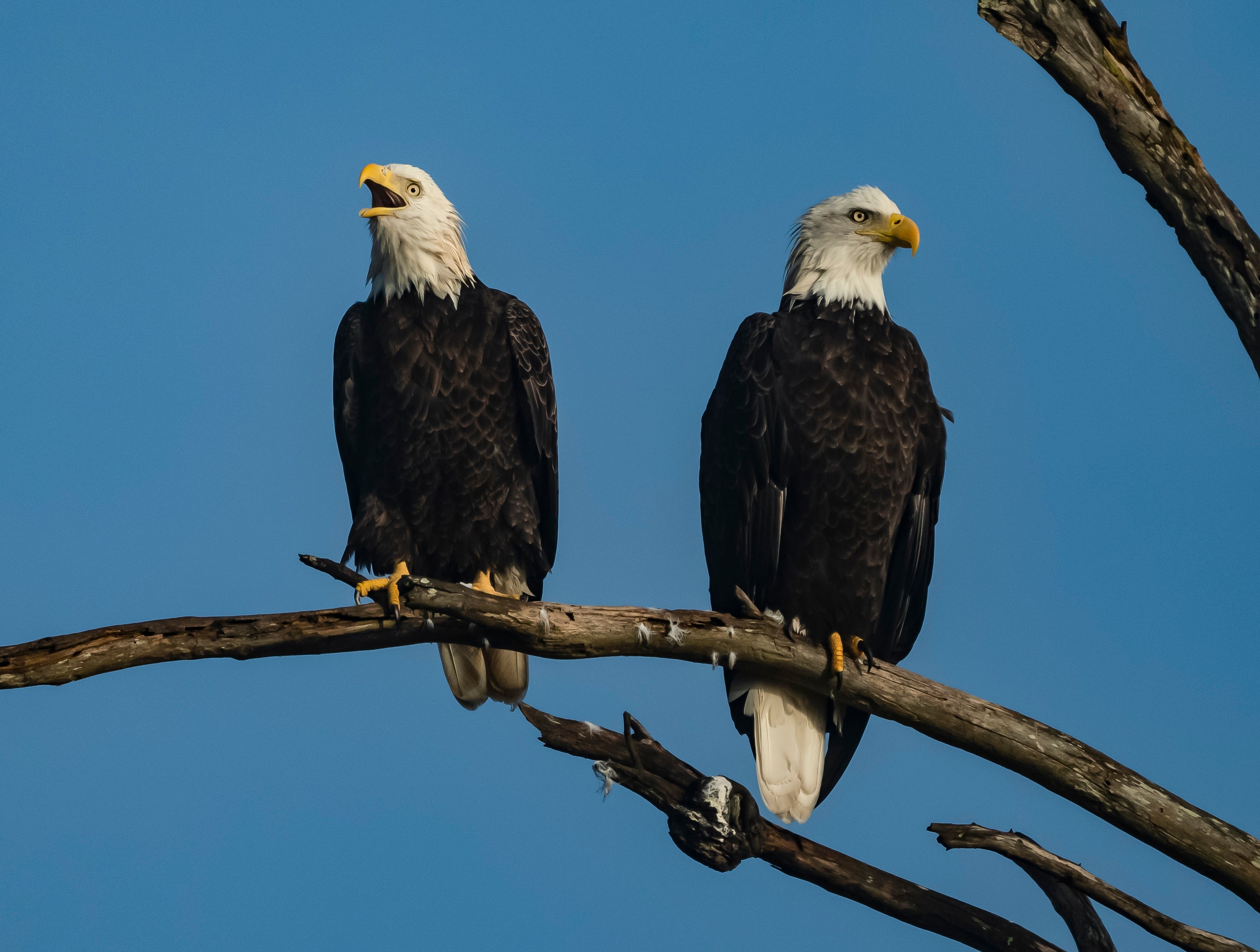
- Bonded pair of eagles that frequent the ranch
Eagle Eye Versus Road Apple
Life here on the ranch normally has extraordinarily little controversy. We live harmoniously adhering to a daily routine, as consistent as the steady ticking of the mantel clock. However, there is one wee exception…
What should this expansive place be named? After reading one, perhaps you can help us decide between two possible names.
The ranch has two, separate entrances, a back forty-acre gate, and the main thirty-acre parcel, where the house and barn dominate the landscape. Both pieces of this property have long dirt roads, perfect for equestrian riders and for those who love to drive horses with buggies.
My mistress Heather Freeman of HERD was not hasty in deciding on the perfect name for this new ranch. The intention was to move here and get to know the place. It has ample room for housing and rehabilitating young equines for the rescue, Helping Equines Regain Dignity. A name is a big decision. The right one would present itself in time.
Unfortunately, not long after arriving here, Heather took a bad fall and broke the top of her femur, shattering it below the hip. The result has been two years of a slow recovery, with another surgery looming to remove the painful hardware. During Heather’s forced absence from the barn, Scott Homstead, her husband, conspired with HERD volunteer, Bill McClelland. A wooden sign was carefully carved and stained by Bill at his home shop. The two men proudly displayed their handy work; Road Apple Ranch was installed at the barn entrance.
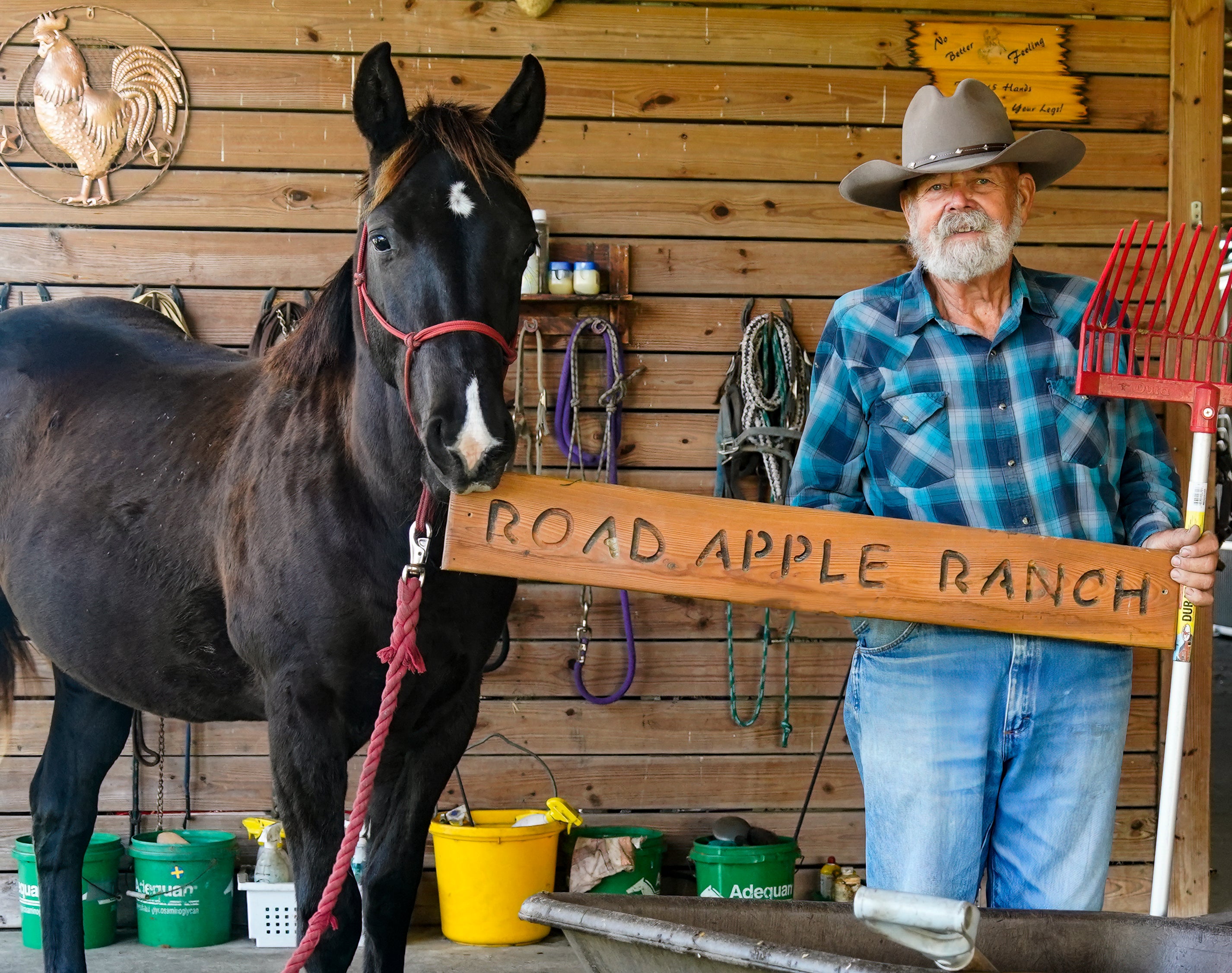
HERD volunteer Bill McClelland, who created the Road Apple Ranch sign with helper Ming.
Now for those of you who do not know what a road apple is, it is what we equines leave in our wake as we trot down the road and rid ourselves of our last meal. In short, it is our dung. The American slang term, road apple, originated in the mid-20th century.
Heather spotted the sign and rolled her eyes. She realized it was a playful joke, but Scott continues to this day to refer to our lovely home as Road Apple Ranch and to himself as the ‘Road Apple wrangler.’ Bill and Scott were all smiles at their naughty effort and the sign is still hanging for all to see.
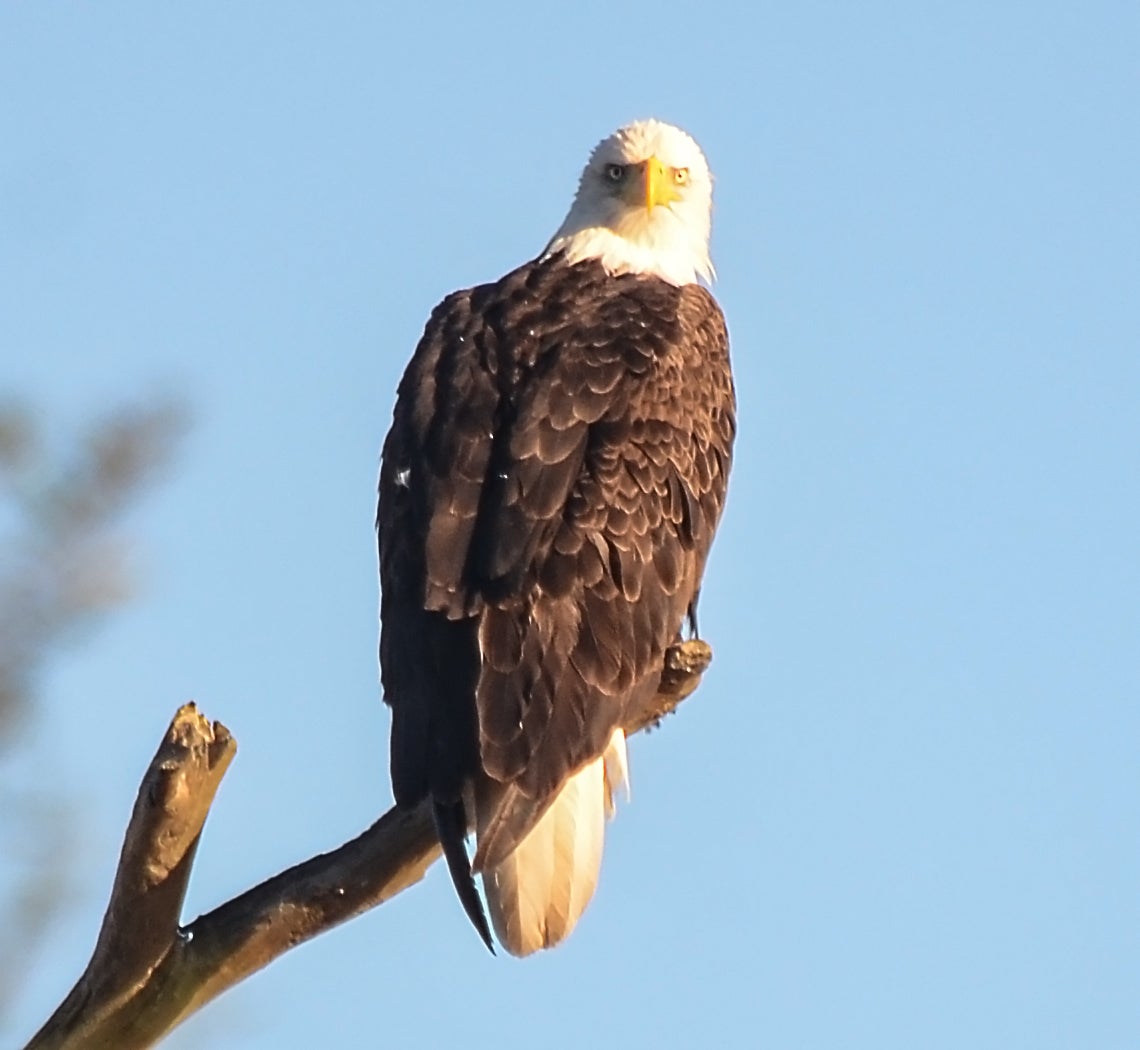
the male eagle waiting on his mate on the top branch
Heather was still not sure of what she wanted to officially call the ranch. Then something magical happened. A pair of magnificent bald eagles assumed residence here with us. Perhaps Eagle Eye Ranch would be a better name!
In our riding ring, we have a tall ancient dead pine tree. It offers the perfect vantage for the eagles, the largest true raptor in North America, to rest and spot prey. Every single evening for many months now, they return to watch over us. Just as the sky turns a rosy pink at sunset, the male lands silently. He preens himself, waiting for his mate on the highest branch, keeping watch for her arrival. The female circles the tree before landing. She is 25 percent larger and a few pounds heavier, with an estimated six-foot plus wingspan. They move to a slightly lower, thicker branch, chattering about their day, before settling in for the dark night. The two raptors huddle so closely, they look to be connected, forming one gigantic bird.
At sunrise, they begin their animated eagle exchange, possibly planning their day. The female always leaves first. She flies solo south. About 30 to 40 minutes later, the male takes flight. He heads north. Whether they meet up during the day we do not know. Their behavior is so consistent that we make sure to head over to the fence line each evening to watch for their return to the ranch. It truly is thrilling.
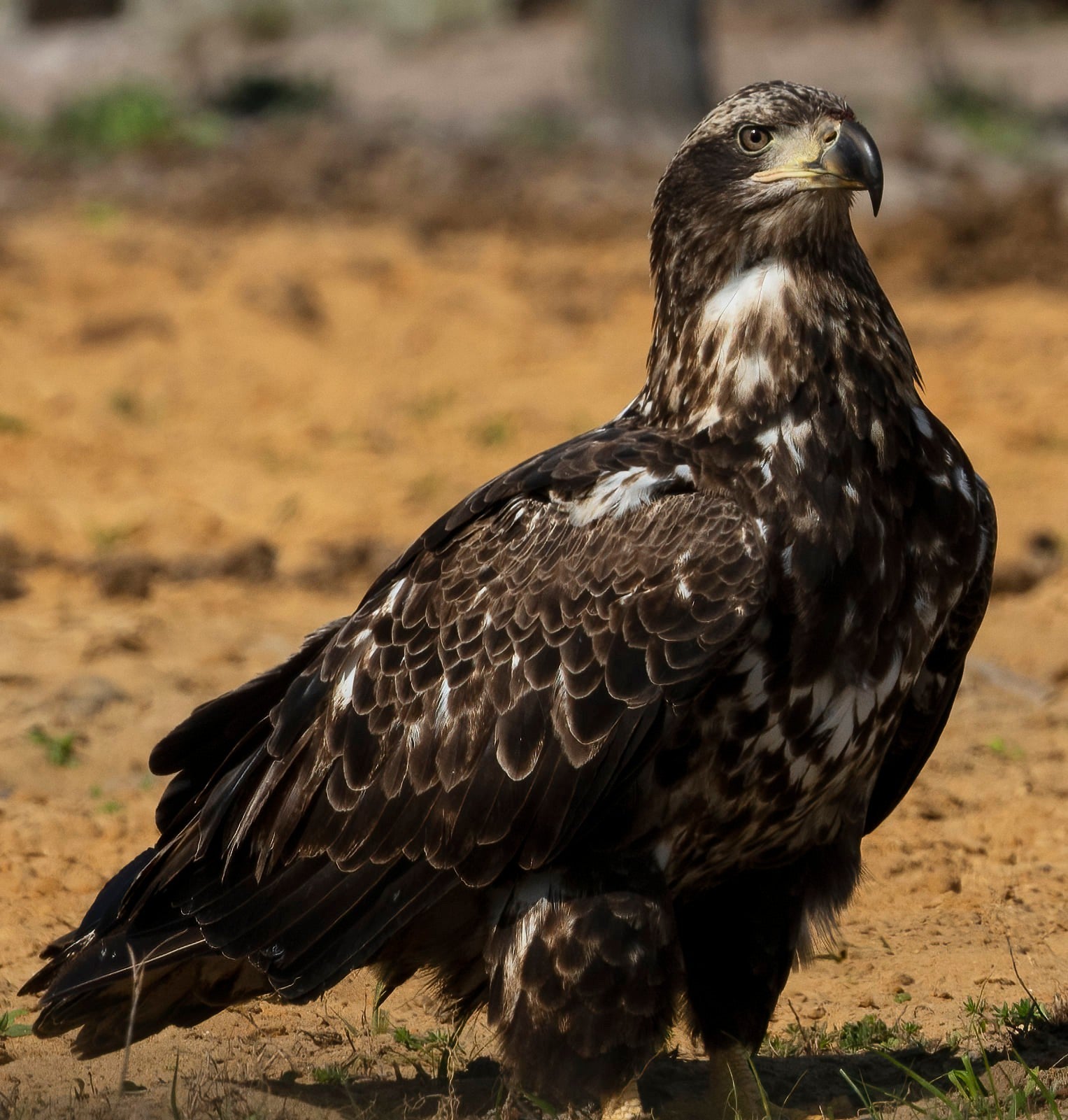
The female eagle brought her juvenile offspring to the ranch
The bald eagle’s natural range covers most of North America, including Canada, the continental United States, and northern Mexico. The size of the bird varies by location and corresponds with Bergmann’s rule: species increase in size further away from the equator and the tropics. For example, eagles from South Carolina average around seven pounds and are smaller than their northern counterparts. The bald eagle typically requires old-growth and mature stands of coniferous or hardwood trees for perching, roosting, and nesting. Tree species are less important to the eagle pair than the tree’s height, composition, and location. Of paramount importance for this species is an abundance of comparatively large trees surrounding a body of water. Selected trees must have good visibility, be over 66 ft tall, have an open structure, and proximity to prey. Beyond fish, the next most significant prey base for bald eagles are waterbirds and smaller mammals.
All birds of prey have excellent long-distance vision, but eagles stand out. They can see clearly about eight times as far as humans can during daylight. This allows them to spot and focus on a rabbit or other animal about two miles away. However, they have poor night vision as their smaller eyes possess more cones than rods like other diurnal birds.
The eagle is an important symbol of strength, courage, and resiliency. These large raptors fly higher than any other bird and are regarded by many birdwatchers as the strongest and bravest. Our nation’s bird, the eagle, conveys the power and voice of the spirit realm for native Americans, as it brings the message of renewed life and man’s connection to the divine.
On a personal note, the word eagle carries important weight for Heather. Her nickname as a young girl was Eagle Eye. This was because she could spot things so quickly no one else saw. From wildlife in the woods to a pony camouflaged by trees in a distant landscape. She was so good at it that her father, Bobby Freeman, would take her with him to the Spartanburg Country Club in the afternoons when she was not at her riding lessons. Heather would find dozens of abandoned golf balls that had not been recovered in the rough or along tree lines. Her father was always pleased with the spoils of her scouting.
So, what do you think? Should the ranch be named for a steaming pile of manure left on the road, or the mighty eagle? I vote for Eagle Eye Ranch. How about you?
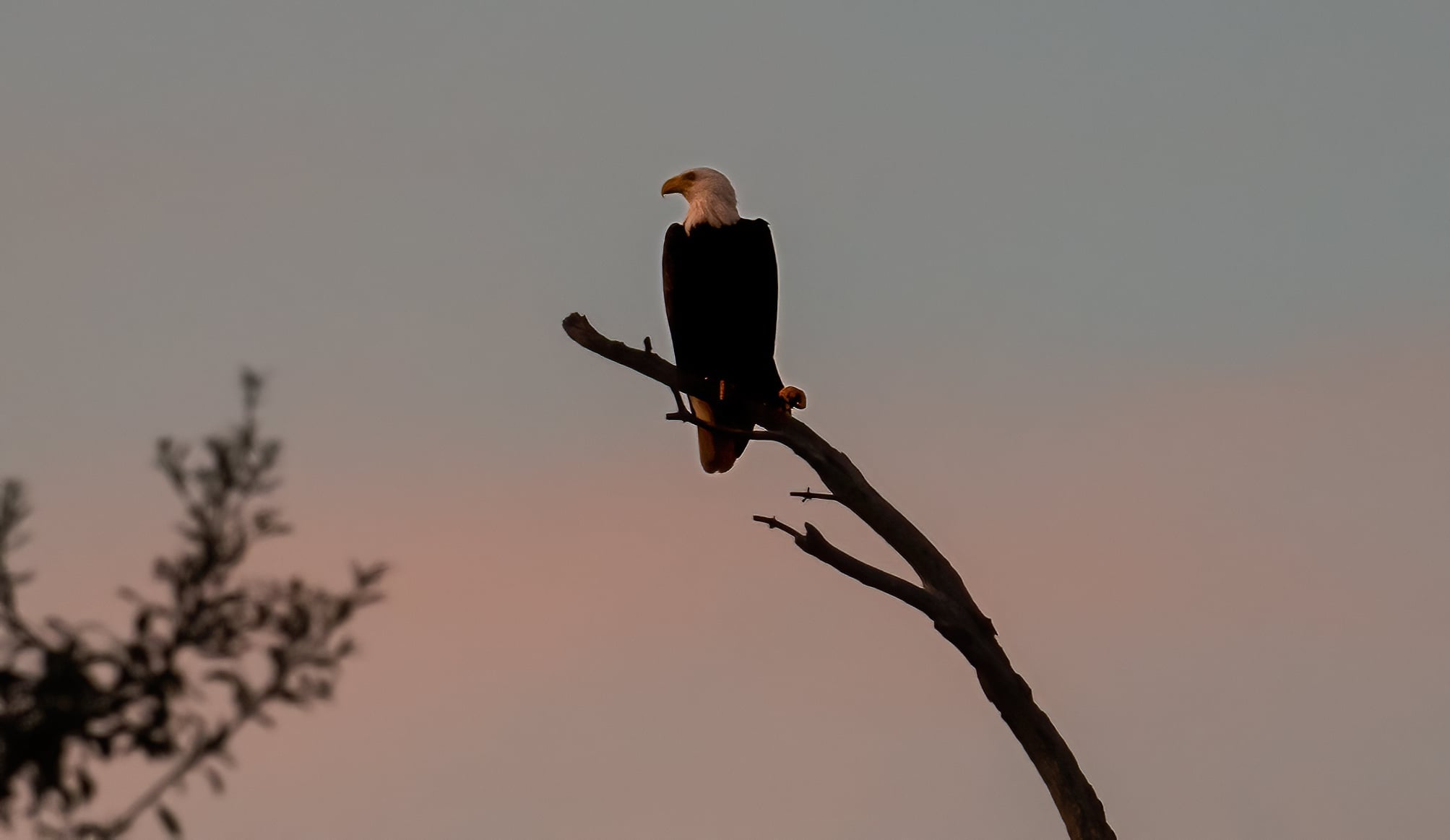
the male eagle always arrives at sunset and waits for the female





